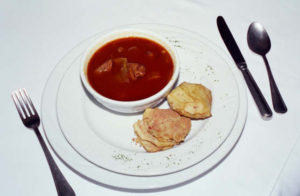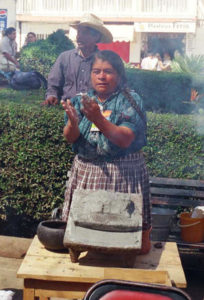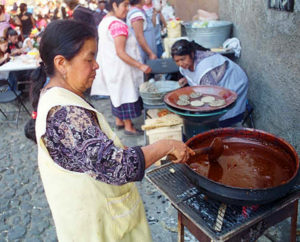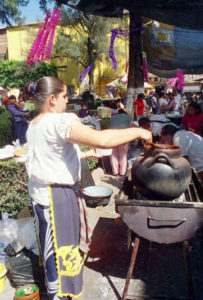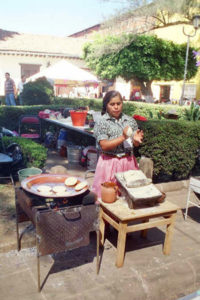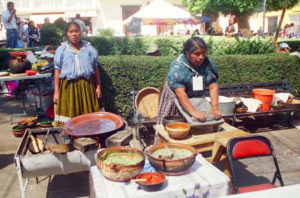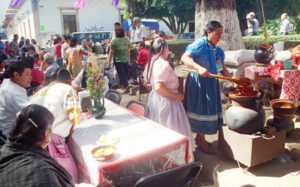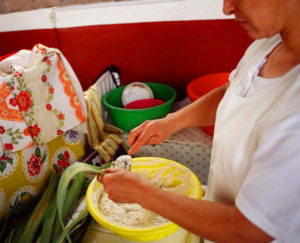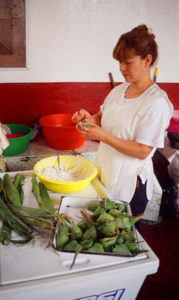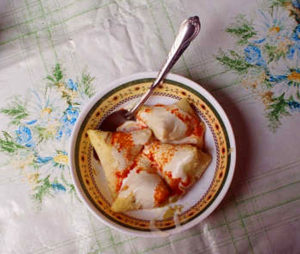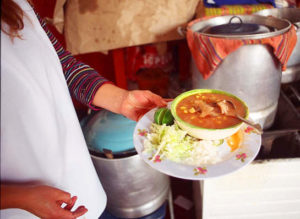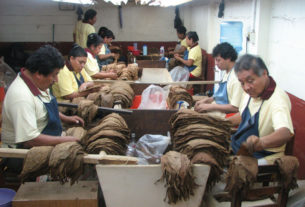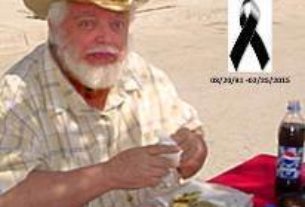Travels With Travis
The Purepecha Indians throughout Michoacan have developed a tantalizing culinary heritage for centuries that still awakens the senses with its powerful aromas and flavors. In Uruapan, Morelia and other parts of the state, corundas and huchepos, both Purepecha variations of the tamale, eagerly await the opportunity to extinguish the hunger of visitors while imparting a delicious cultural experience. Of course, a plate of corundas wouldn’t be complete without a bowl of churipu, a savory, mildly-spicy stew that is another gift from the Purepecha heart.
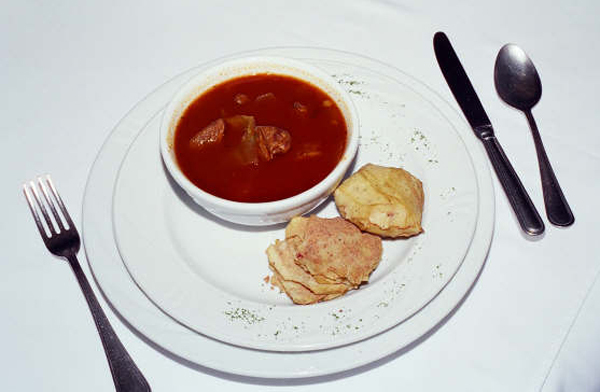
Los Mirasoles de Morelia, an upscale restaurant on Avenida Madero in the historical center, works continuously to develop its regional menu, serving corundas, churipu, jahuacata and other local favorites from the state’s indigenous population. A line of outdoor cafes a few blocks away at Mercado Antojitos Mexicanos, next to Templo de San Augustin on Calle La Corregidor, also serves delicious corundas and other regional favorites.
A sampler at the Uruapan food show
In Uruapan, visit Mercado de Antojitos where you can get some great home-style corundas and churipu. At a recent food show in Uruapan, indigenous people from throughout the “Purepecha Meseta” prepared native foods such as atapakua de calabacita – a thick, green stew, charales (finger-sized fish), and another variation of the tamale, the chapata.
Cristina Vargas of San Lorenzo divided her time between preparing corundas, churipu, atole de leche and tamales. The 54-year-old Vargas – dressed in a pink blouse, maroon velvet apron and a scarf around her head – spent long hours laboring over tall clay pots on open fires preparing these dishes, and customers were not disappointed. The intoxicating aroma of churipu, prepared with beef, garlic, onion, cilantro and red chili, captured the imagination of Angelica Trevino de Rhodes. ”I like it very much. My family and me, we love Mexican food and this kind of food is our food. Churipu is a traditional Purepecha dish for special celebrations in Michoacan,” she said.
I’d already eaten, so I asked for a cup of atole de leche, a thick, hot, sweet concoction made of milk and cinnamon, plus corn ”to make it thick,” explained her daughter-in-law, Sylvia Alejo, 19. She and another relative had been helping Vargas. “She made it and we helped,” Alejo says. “I enjoyed it. It’s a tradition.”
They all seemed ready for a break; Vargas’s puffy cheeks and small tired eyes were still given to frequent smiling as she busied herself around a pot shrouded in waves of steam.
”It’s very tiring,” said Vargas as the day drew to a close. ”It went well. I sold a lot of churipu and corundas.”
Farther down the walkway from Vargas, Esther Ramon of San Lorenzo and her daughter Lupita busily prepared quesadillas with cheese and pumpkin flowers. Esther, dressed in a blouse of emerald green lace, leaned into the stone metate, her face tightening as she pressed the long, squared mano over the blue masa, shifting it back and forth, breaking off a portion to mold into a tortilla.
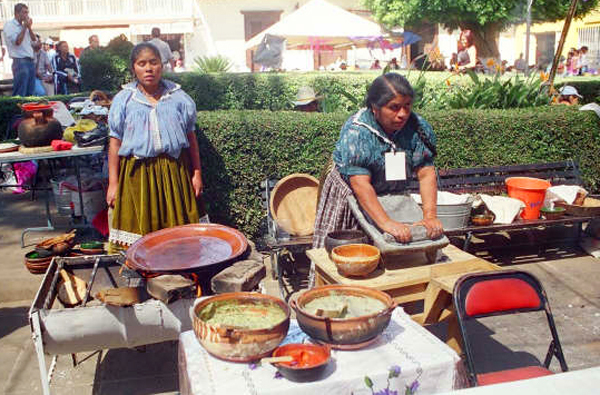
Lupita, who wore a blue blouse with puffed sleeves and a green velvet apron with lace trim, sprinkled pumpkin flowers onto the quesadillas cooking on a skillet and turned them, unfazed by the fire ballooning from underneath, the heat spilling vigorously into the air.
The sunlight captured the highlights of Esther’s sharp features, sweat peppering her face but never beading up as she stood proudly amidst the murmur of the crowds waiting in line; her forearms rippled as she loudly slapped the tortillas back and forth, creating a mantra-like rhythm that rarely broke form.
A young man with sunglasses over his head took a voluptuous bite from a blue quesadilla; the meal lay on a plate he shared with a young lady who carefully plucked small pieces and popped them into her mouth, laughing shyly at some quiet joke. I ordered a couple of Esther’s and Lupita’s quesadillas, discovering their earthy, more full-bodied taste, crunchy and mildly tart, compared to the much lighter white corn tortillas.
Manuel Moreno and his wife, Letty Tolentino-Moreno of Salt Lake City, Utah both enjoyed their quesadillas as well as the whole festive scene. Letty, a native of Uruapan, and Manuel, from Morelia, wanted their three children to see what their own childhoods were like, which were quite different from growing up in Utah. ”It’s nice to come back,” Letty told me. ”When we were little, my dad used to be one of the dancers, Los Viejitos. I used to do that. In the early ’80s I left to the states. Now I am back, I can see something being older. The food, the dancers, it’s just nice.”
I came back later for dinner and ordered a plate of pollo en mole. Celia Bautista Ramirez of Paracho proudly informed that it was a very healthy meal. ”We don’t put any condiments in our mole,” she says. ”It’s bad for the stomach.” Paracho is famous for its guitar makers and performers; she told me her brothers would perform the following night at Casa de la Cultura.
I didn’t have to wait until the following night to hear some powerful music. There was a symphony here at the food show, of violet and magenta papel picado waving in the slow breeze. Their liquid movements seemed to conduct the rhythm of many hands slapping blue corn tortillas together, of strumming guitars wrapping around tremulous falsettos that scrambled into the plaza, of steam billowing methodically from pots of boiling food, of ocean blue and playful yellow flowers racing across white cotton tablecloths strewn with the remains of a busy day, and of the slow tingle of the mole’s spice and sweetness moving from my mouth into my consciousness where it distilled with all the sensations of the passing day.

